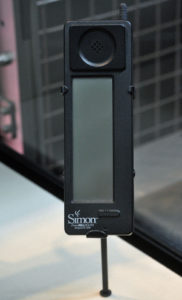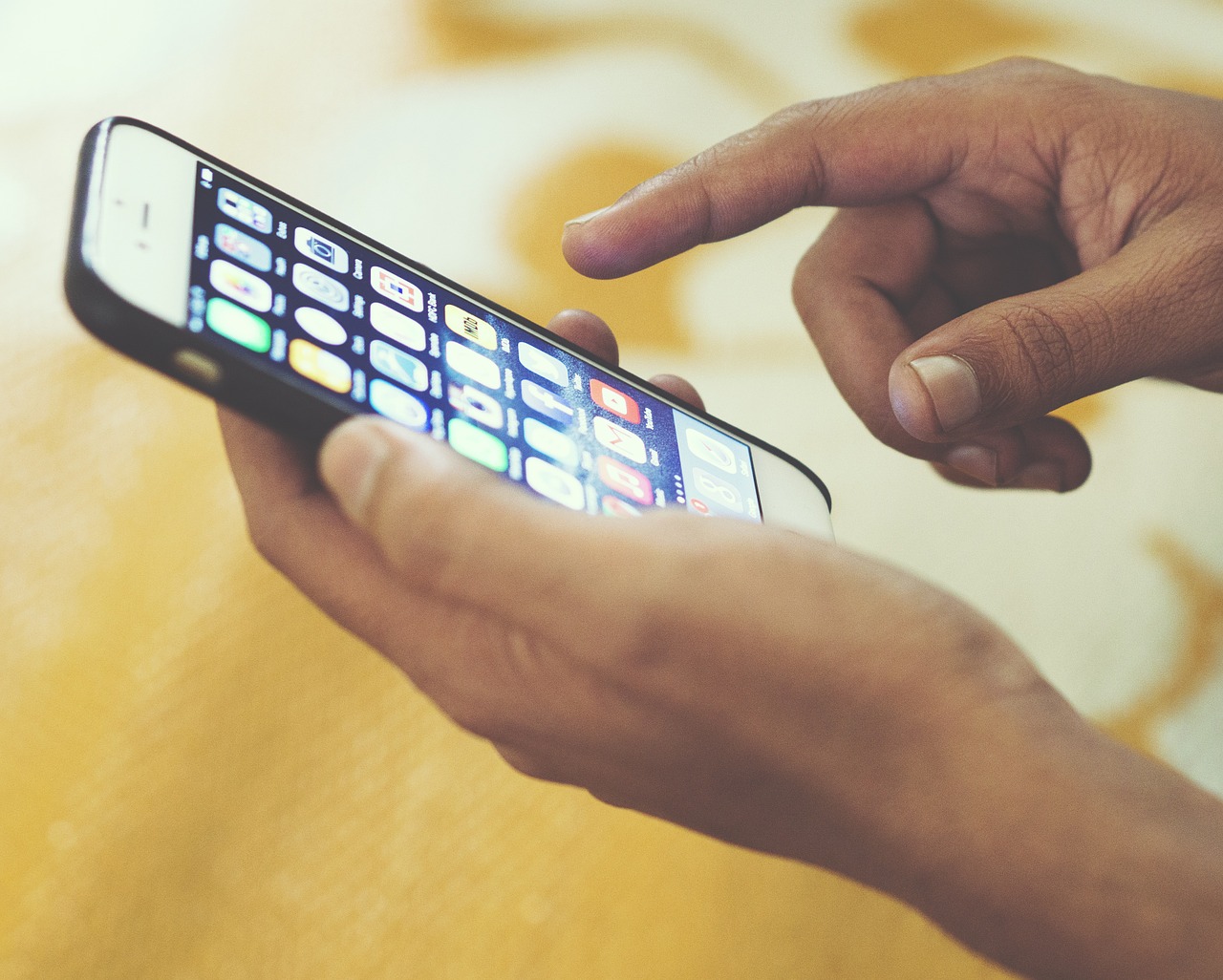This year marks the 25th birthday of the world’s first smartphone, known as the “IBM Simon Personal Communicator” or, affectionately, just “Simon.” The device is somewhat quaint and old-fashioned compared with the sophisticated smartphones we know and love today.
Nevertheless, Simon was a powerful piece of technology and a major player in ushering in our current smartphone-obsessed era. To celebrate 25 years of smartphones, read on for eight fun facts about Simon.
-
Unveiled in 1992, Simon didn’t hit the market until 1994.

Image by Larry Miller | Flickr
Developed by IBM and BellSouth Cellular (now AT&T), Simon was revealed for the first time under the code name “Angler” at the 1992 COMDEX convention. COMDEX was one of the world’s largest computer exhibition and trade shows. It was held every fall in Las Vegas from 1979 to 2003.
However, it wasn’t until August 16, 1994, that Simon was made available for consumer purchase through BellSouth. In early 1995, Simon was featured on the PBS television show “Computer Chronicles” as part of an episode on the “Year of the Portable,” reflecting the growing trend for portable, personal communication devices.
-
Simon was big and expensive.
Simon may not have been as big as the first ever mobile phone, but it was still much larger and heavier than today’s sleek and lightweight devices. Measuring 8 inches long, 2.5 inches wide, and 1.5 inches thick, and weighing in at just over 1 pound, Simon would definitely have been difficult to tuck into a pocket.
As for its purchase price of $1,100, that’s certainly a lot of money. However, it was still less than might be expected for a “do it all” electronic device at that time. And for customers who were willing to sign a two-year contract with BellSouth, the price dropped to $900. Eventually, the price dropped to just $600, approximately half the amount of the original price.
-
Simon featured a touchscreen and apps.
Earlier personal digital assistant (PDA) devices had experimented with different portable touchscreen options. However, Simon was the first widely-available phone to boast this innovative technology. Although consumers could interact with the touchscreen’s interface using a finger, as is the case with today’s smartphones, it was more common to use the included stylus for easier navigation.
As for apps – which back then were known as “features” rather than apps – Simon came pre-loaded with a number of basic ones. These included an address book, a calculator, a calendar, a note pad, and a sketch pad. One of Simon’s biggest selling points was the mobile e-mail access it offered. Amazingly, the phone could even send faxes.
-
Predictive typing made its first appearance with Simon.
To save screen space, Simon didn’t always display a full keyboard on its touchscreen. Instead, it relied on the PredictaKey feature, an early (and somewhat inconvenient) iteration of predictive typing.
With PredictaKey, the keyboard would guess which alphanumeric keys you would be most likely to need next based on the character you had just entered. From there, it would display its top six predictions. If none of those keys were the ones you wanted, you could scroll through manually to view other key options in sets of six.
-
Simon was a movie star.
The Net, a 1995 Hollywood technological thriller, marked the first time that movie audiences had ever seen a smartphone on screen. A scene towards the end of the film shows the villain making a call just by pressing the touchscreen on his phone. Though it wasn’t officially credited in the film, only one device at the time was capable of one-touch dialing: Simon.
-
Simon could be connected to a regular phone jack.
It might seem strange now to imagine plugging a smartphone into a regular phone jack. Although mobile phones were by no means uncommon when Simon was first launched, cellular service at the time was still pricey and could be unreliable.
To address this, one of Simon’s optional accessories was a cable. This allowed the device to be connected to a standard phone jack, enabling calls to be made via more reliable and less costly land-line systems.
-
Simon was never actually called a smartphone.
Today we think of Simon as a smartphone – as, indeed, it was. However, that term wasn’t actually coined until several years later, when it was used to describe an Ericsson device known as “Penelope.” Penelope was a hinged unit featuring a full qwerty keyboard and a much larger touchscreen display.
-
Simon wasn’t on the market for long.
Although we have Simon to thank for kicking off the smartphone craze, Simon itself wasn’t much of a success. The device was only on the market for about six months, during which time it sold roughly 50,000 units.
There were several factors that weighed against Simon. These included its price, a weak battery that provided only an hour or so of power between charges, and competition from increasingly sleek flip phones that were far more popular at the time.

